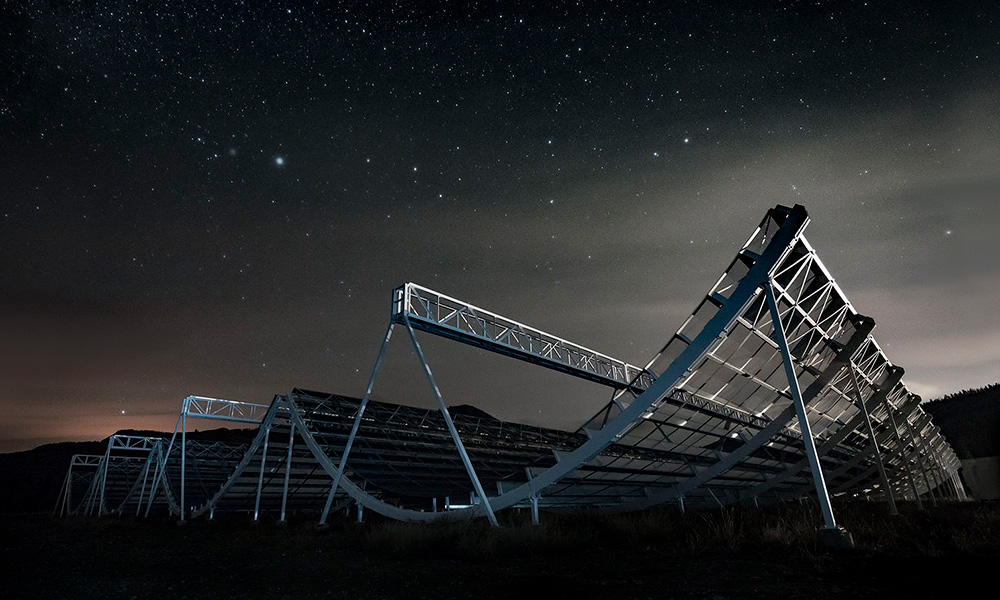
Nestled in a remote valley just an hour outside of Kelowna, amongst ridges and plateaus where cattle graze, Dr. Alex Hill and his students are watching the stars. But they’re not star-gazing for the fun of it; rather, the team is using a state-of-the-art telescope at Canada’s largest radio observatory—the Dominion Radio Astrophysical Observatory (DRAO)—to understand the origins of our universe.
“What motivates me on a day-to-day basis is just pure curiosity about understanding how the universe and our galaxy fit together, and how stars form,” explains Dr. Hill, an Assistant Professor in the Irving K. Barber Faculty of Science. “The universe is 75 per cent hydrogen and 23 per cent helium. The remaining two per cent consists of everything else we’re made of—like carbon, oxygen, nitrogen and iron—and that’s all created by nuclear fusion in our stars.”
His research covers billions of years, from birth to death. Stars die in various ways, and depending on the size of the star it can be quite violent or very gentle, Dr. Hill adds. “When stars die, they return all those elements to the gas between the stars. This eventually creates a new generation of stars, and this new generation has even more of the heavy elements that life on earth consists of.
“Understanding where the stuff we’re made of comes from is my everyday focus.”
Please visit the UBC Okanagan news site to read the full story.
Through Strategy 6: Collaborative Clusters, we are providing researchers with the support needed to collaborate internally across UBC and externally with local and global partners.